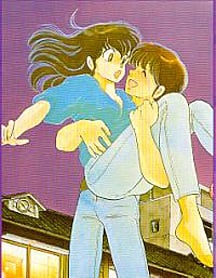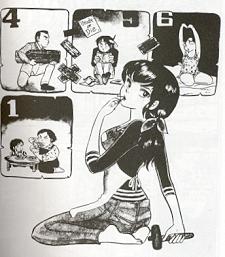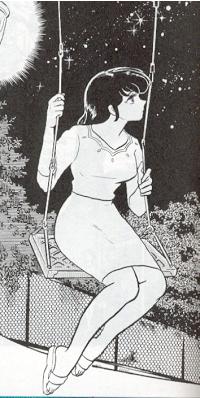Review
by Bamboo Dong,Maison Ikkoku
Manga
| Synopsis: |  |
||
Possibly one of the most well known female manga artists, Rumiko Takahashi is the author of multiple acclaimed works. Among her most popular include Ranma ½, Inu-Yasha, Urusei Yatsura, and Maison Ikkoku. When one thinks of Takahashi's works though, the first things that often come to mind are quirky characters and slapstick comedy. Perhaps that's the reason why her romance story, Maison Ikkoku seems so radically different from all her other works. Although the odd characterization and wacky humor are still there, the story flows much more smoothly and can be highly emotional at times. Originally published by Shougakukan, the manga was later compiled into fourteen volumes of tankouban, known in the United States as graphic novels. Because of its popularity, it was made into a ninety-six episode anime series that ran from 1986 to 1988. Both the manga and anime series eventually made their way across the Pacific where they were distributed by Viz. |
|||
| Review: | |||
 The story of Maison Ikkoku centers on the successes and mishaps of the tenants of the housing complex by the same name. The main character, a college student named Godai Yusaku, is always threatening to move out of the house, as he can't get peaceful study time with his noisy neighbors. His life is dramatically changed one day though, with the arrival of the house's new manager, a beautiful young woman named Otonashi Kyoko. Although he is smitten with her and would do anything for her love, he discovers that she has recently been widowed and still has strong feelings of attachment to her departed husband, Soichiro (which is also the name of her beloved dog). To make matters even worse, there's another man with his eye on Kyoko, her charismatic and striking tennis coach, Mitaka Shun. The story of Maison Ikkoku centers on the successes and mishaps of the tenants of the housing complex by the same name. The main character, a college student named Godai Yusaku, is always threatening to move out of the house, as he can't get peaceful study time with his noisy neighbors. His life is dramatically changed one day though, with the arrival of the house's new manager, a beautiful young woman named Otonashi Kyoko. Although he is smitten with her and would do anything for her love, he discovers that she has recently been widowed and still has strong feelings of attachment to her departed husband, Soichiro (which is also the name of her beloved dog). To make matters even worse, there's another man with his eye on Kyoko, her charismatic and striking tennis coach, Mitaka Shun.
Perhaps the simple story line of Maison Ikkoku is actually the most endearing part of the series. Basically, the entire series follows Yusaku and Kyoko's relationship with one another, showing the various nuances of their lives. The only purpose that the other characters serve is to create conflicts, exposition, and comedic relief. This allows the reader to concentrate on the other aspects of the story, such as the emotional tone in the scenes, instead of worrying about what's going on plot-wise. As far as the writing goes, Takahashi has a very smooth style that is very pleasant. Even as a manga author, she incorporates many literary angles into her works, effectively providing foreshadowing to create suspense, and carefully inputting bits of symbolism into her writing. Another interesting touch she has is the way she employs names in the series. In order to understand the double entendres behind the names, a knowledge of the Japanese language is necessary, as oftentimes the pun resides in the spelling of the kanji. Other times, it's obvious to see the fun she has in naming her characters. In Maison Ikkoku, for example, the characters follow a numbering scheme, with multiple names containing numbers in them, like Nanao, Godai, Roppongi, etc... (see sidebar). Even though the artwork in Maison Ikkoku still carries Takahashi's unique flavor of character and setting design, it somehow seems more gentle than some of her other series. The serenity of the characters at certain moments combines with the emotional impact of the scenes and creates a moving effect. Some of the most enticing aspects of her art are the facial expressions on the characters' faces. Skilled at drawing a variety of emotions, ranging from elation through depression to anger, Takahashi manages to give life to the people on the page, giving them a sense of realism and making the story more believable. With hordes of fans all over the world, Rumiko Takahashi is undoubtedly one of the most popular manga artists in the industry. With the skill and creativity to pen a broad range of genres, she is responsible for introducing a large portion of fans to the world of manga and anime. She is known for her characterization and artistic expression in her works, and Maison Ikkoku is no exception. It is a must-read for any and all fans of Takahashi. With endearing characters and an engaging plot, the series has situations that can apply to everyone, making readers feel as though they too can be tenants at Maison Ikkoku.
|
| Grade: | |||
|
Story : A
Art : A-
+ Wonderful show of emotions in art |
|||
| Production Info: | ||
|
Full encyclopedia details about |
||
